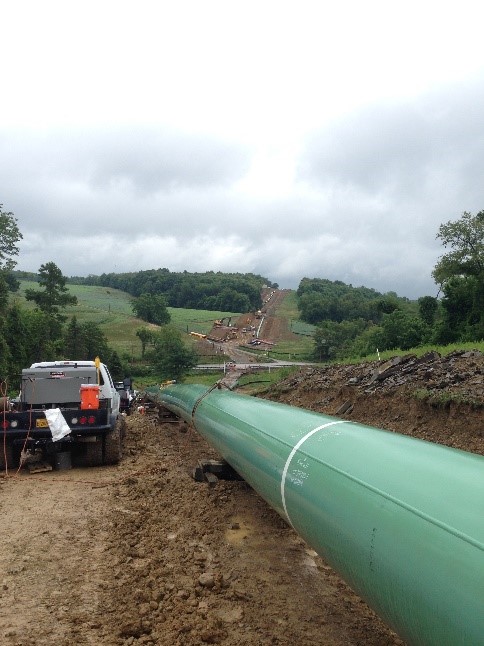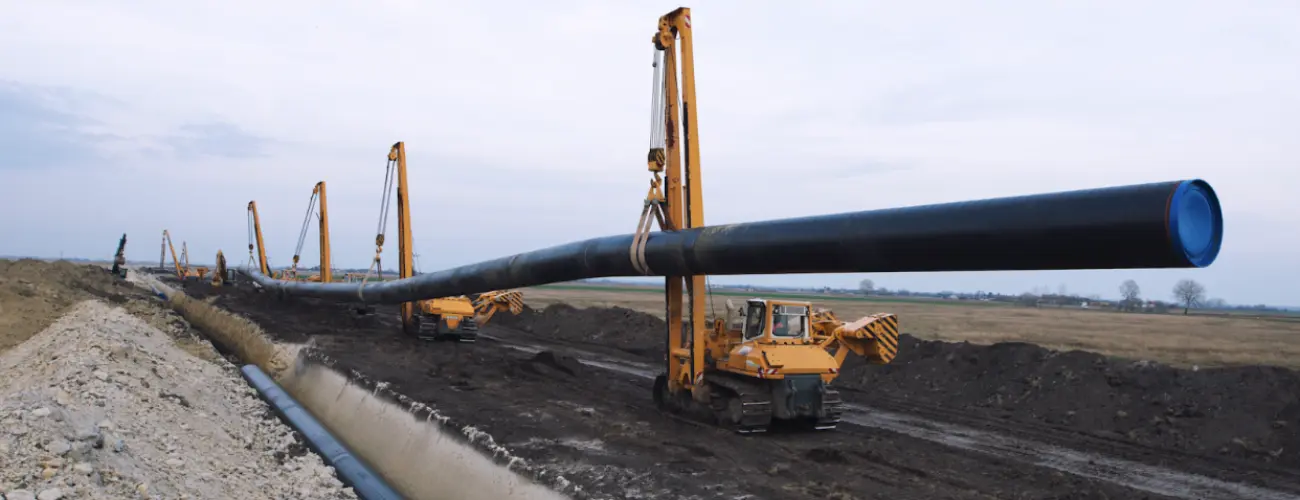Top 7 Mistakes to Avoid During Creek Pipe HDPE installation
Wiki Article
Recognizing the Basics of Pipes Installation: What You Required to Find Out About the Process
Appropriate pipe installation is crucial for any type of plumbing system. It needs careful consideration of different elements, consisting of material option and adherence to regional regulations. A tactical layout can avoid problems like stress loss, while the right devices assure reliable signing up with strategies. Nonetheless, also experienced installers can make usual blunders. Recognizing these essentials can lead to a more efficient and durable system, prompting a closer take a look at the crucial aspects entailed in the process.Choosing the Right Materials for Pipe Installation
When thinking about pipe installation, the selection of appropriate materials is necessary to guaranteeing sturdiness and performance. Various products are readily available, each offering special advantages and considerations. PVC pipes are light-weight, resistant to corrosion, and cost-effective, making them ideal for residential pipes. On the other hand, copper pipelines, understood for their durability and ability to endure heats, are commonly chosen for home heating systems.Additionally, galvanized steel pipes offer strength and resilience, suitable for sturdy applications, although they are vulnerable to corrosion over time.For below ground setups, polyethylene pipelines are favored because of their versatility and resistance to tension fracturing. Proper material option depends on the details requirements of the task, including stress ratings, temperature variants, and the chemical nature of the fluids being transported - Creek Pipe trenching services. Eventually, educated choices relating to pipe products contribute greatly to the general success and longevity of pipes systemsComprehending Local Building Ordinance and Rules
Exactly how can understanding local structure codes and policies impact pipe installation? Familiarity with these codes is vital for making sure that pipe installations are secure, certified, and efficient. Local structure codes lay out certain demands relating to materials, installation strategies, and precaution, which must be stuck to to avoid possible legal issues and expensive fines.Failure to conform can bring about evaluations being stopped working, hold-ups in task completion, or even mandated elimination of improperly installed pipes. On top of that, understanding zoning laws and guidelines can affect the kind of materials enabled, along with the methods utilized for installation.Contractors and homeowners alike ought to spend time in assessing local regulations before beginning any type of installation project. This proactive method not only advertises safety and security but also boosts the general high quality and longevity of the plumbing system, inevitably cultivating lasting performance and complete satisfaction.Preparation Your Pipe Design and Style
Appropriate planning of pipe format and style is important for attaining a reliable pipes system. This process starts with assessing the specific requirements of the area, taking into consideration the area of fixtures and appliances. Exact measurements assure that pipes are properly transmitted, reducing bends and transforms that can result in push loss.Consideration of the flow prices and the sorts of products used is critical, as various products have varying resilience and compatibility with plumbing systems. Furthermore, the designer must account for future growths or alterations to the design, permitting for versatility in instance of renovations.Efficient drainage and ventilation are additionally significant elements of the layout, as they avoid obstructions and guarantee appropriate waste elimination. Finally, cooperation with local building codes ensures compliance and safety, which is extremely important in any type of pipes installation task.Important Tools and Devices for Installation
Effective pipe installation rests on having the right tools and equipment available. Necessary devices consist of pipe cutters for tidy cuts, wrenches for tightening fittings, and pliers for gripping and turning pipes. Furthermore, a degree warranties pipelines are mounted equally, while a gauging tape aids in achieving accurate lengths.For particular materials, a blowpipe may be needed for copper pipes, while a PVC cutter is important for plastic choices. Safety and security devices, such as gloves and goggles, shields installers from potential dangers during the process.A pipeline bender can be especially valuable for creating smooth contours without endangering honesty, while a torque wrench warranties that links are protected to the maker's specifications.Having these tools readily available not just promotes a smoother installation procedure however likewise adds to the overall resilience and functionality of the pipes system. Correct devices is vital in achieving long-lasting outcomes.Strategies for Appropriate Pipe Joining and Sealing
Achieving a secure and leak-free connection in between pipelines needs cautious interest to joining and securing strategies. Numerous techniques exist, each matched to various pipe products and applications (Creek Pipe reviews). For instance, welding is frequently used for metal pipelines, making certain robust links with heat blend. In comparison, plastic pipes profit from solvent cement or blend welding, producing solid, long-term bonds.Threaded connections prevail in both steel and plastic piping, calling for exact alignment and using ideal sealants, such as Teflon tape or pipe dope, to avoid leakages. Compression installations provide one more choice, where mechanical stress protects the pipelines together, making them quickly dismantled for maintenance.Regardless of the method selected, correct preparation is crucial. This includes cleaning pipe finishes and guaranteeing they are without debris. Applying these techniques carefully will enhance the durability and reliability of the pipe system, eventually adding to its efficient performanceTypical Blunders to Stay Clear Of During Installation
During pipe installation, preventing typical errors is crucial for guaranteeing a reliable and efficient system. One frequent error is stopping working to determine and reduce pipelines properly, which can bring about inappropriate installations and leakages. In addition, disregarding to inspect the compatibility of materials can cause deterioration or various other damage over time. Poorly securing joints and connections can likewise produce weak points in the system, triggering prospective failures.Another common mistake is neglecting the significance of slope and drainage; pipelines have to be mounted at the proper angle to promote appropriate flow. Inadequate support for pipelines can cause drooping and tension, affecting the integrity of the system. Inevitably, ignoring neighborhood codes and laws can lead to expensive rework and security risks. By recognizing these pitfalls, installers can greatly boost the durability and efficiency of pipe systems.Maintenance Tips for Durable Pipe Systems
To assure the longevity of pipe systems, routine inspections and cleaning are crucial methods. These actions help recognize potential problems prior to they escalate into significant troubles. Additionally, utilizing proper insulation methods can better safeguard pipes from temperature level fluctuations and ecological factors.Routine Examinations and Cleaning
Routine inspections and cleansing are necessary for preserving the long life and efficiency of pipe systems. Regularly taking a look at pipelines for indications of deterioration, leakages, or obstructions can assist identify prospective problems prior to they escalate into costly repair services. Cleansing pipelines occasionally removes build-up that can restrict flow and promote degeneration. It is advisable to schedule examinations a minimum of annually, yet much more frequent checks may be required in high-usage environments. Making use of professional services for extensive cleaning guarantees that all debris is efficiently removed. Additionally, keeping records of assessments and maintenance activities aids in tracking the system's health in time - Creek Pipe contact. By prioritizing these methods, homeowner can boost the dependability and life expectancy of their pipe systemsAppropriate Insulation Techniques
Reliable insulation methods play a necessary function in maintaining the performance and durability of pipe systems. Proper insulation lessens heat loss in warm water pipelines and protects against freezing in cold water pipelines, significantly reducing power costs and possible damage. Common products used for insulation consist of fiberglass, foam, and rubber, each offering varying degrees of thermal resistance. It is important to assure that insulation is used uniformly, covering all subjected locations without gaps. In addition, securing insulation with proper fasteners aids maintain its setting and effectiveness gradually. Regular examinations ought to be performed to identify damage, guaranteeing prompt substitutes. By carrying out these techniques, pipe systems can run efficiently and have an extensive service life, inevitably benefiting both the setting and the property owner.
Often Asked Inquiries
How Do I Identify the Appropriate Pipe Dimension for My Job?
Establishing the appropriate pipe size includes examining the task's circulation needs, stress specifications, and the kind of liquid being delivered. Consulting layout requirements and carrying out estimations warranties perfect performance and performance in the installation process.What Are the Ecological Influences of Different Pipe Materials?

Can I Set Up Pipes Myself or Should I Employ a Specialist?
The inquiry of whether to set up pipelines separately or employ an expert typically depends upon the individual's skill level and project intricacy. A specialist might ensure compliance with policies and decrease potential lasting concerns.
For How Long Can I Expect My Pipe Installation to Last?
The longevity of pipe installation varies considerably, usually lasting 20 to 100 years, depending upon materials, installation high quality, and maintenance. Routine assessments and proper treatment can improve toughness and stop premature failings.
What Are the Signs of a Failing Pipe System?
Signs of a failing pipe system include frequent leaks, unusual water pressure changes, discolored water, mold growth, and persistent dampness. Homeowners should monitor these indicators to stay clear of costly damage and guarantee timely repairs are made.Report this wiki page